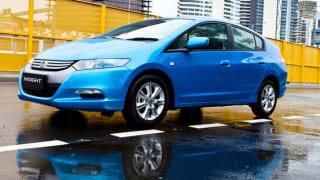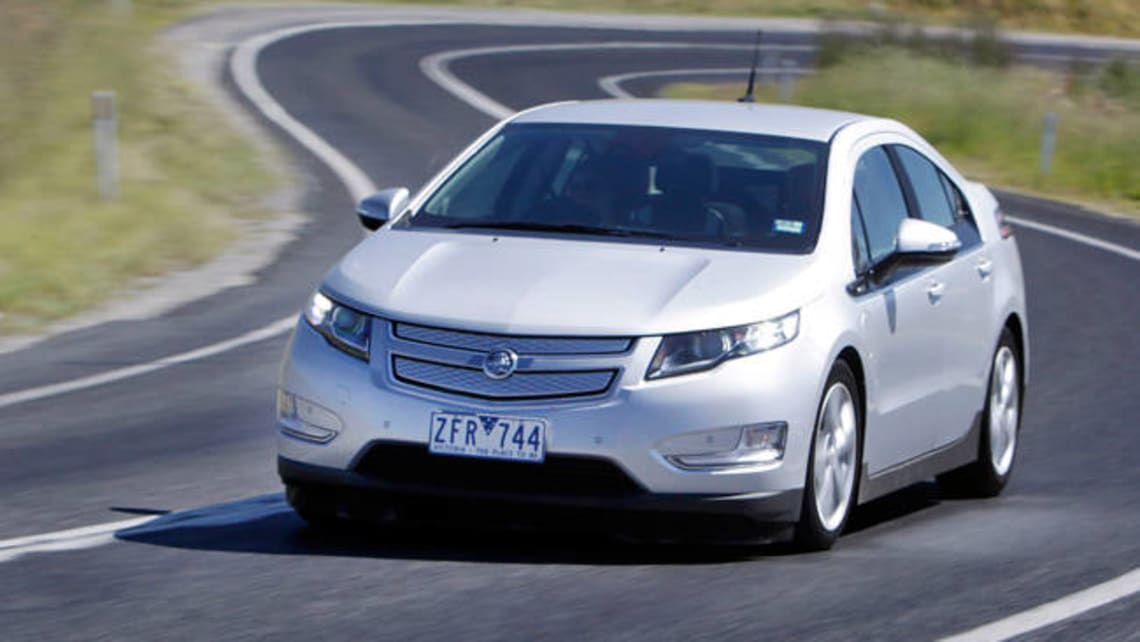
Honda Insight VTi-L 2012 Review
I read recently where someone had completed a loop of Tasmania driving one of these cars. They...
Browse over 9,000 car reviews

If motorists embraced electric cars as affectionately as mobile phones, Australian freeways would be congested in silence. It may yet happen but compared with mobile phones, it's a long road from creating an electric car to finding ready owners.
Apple launched its first iPhone the same time as Chevrolet announced the electric Volt sedan. That was 2007. We're now up to iPhone 5 and Chevy has been making the Volt for less than two years in the US, selling about 15,000 this year to date.
The Holden Volt finally gets to Australia next month with a $59,990 price tag. Holden's director of energy and technology, Richard Marshall, admits it's been a long road but says reliability and durability were paramount.”
“It has to fit into the way you drive,” he says. “People have to feel confident and comfortable with the technology. New technology suits early adopters and it's those buyers who build the advocacy.” Holden says it already has “very good response” to the car.
Is $59,990 too steep for a small car? Undoubtedly, yes. This is a Holden Cruze with a new drivetrain. It seats only four and rear-seat room isn't for big people. But the equipment in the car goes some way to help justify the price. A small way.
There is cruise control, sat-nav, lane departure warning, collision alert, an Apple-inspired dash with gloss white panels, upmarket audio, leather and so on. Punch the calculator and at an average of 3.9 litres/100km (it has a small petrol engine to drive a generator to charge the batteries), it would take 52 years to equal the fuel bill of the $25,040 Cruze with a 1.4-litre turbo engine.
Even if you never used petrol and kept the electric-only daily drive under 80km, it would take 22.5 years to break even with the petrol Cruze. But - and it's a huge but - you would glow in the knowledge that you are part of a bigger picture to reducing air pollution and only your neighbour who cycles to work is greener.
It is a modified Cruze but looks a whole lot better. The shape is close to future-proof, is compact for busy streets and can seat four adults for short trips. The two rear seats are cramped and taller passengers will bounce their heads on the sloping rear glass window. Hard plastics abound and, sadly, cheapen the car. Clearly the big money is in the drivetrain.
The dashboard is bright, simple and even attractive until you turn on the ignition key. Then it lights up with a bazillion graphs and letters, numbers and shapes that would make an Airbus 380 pilot shiver. Get used to the complexity of the read-outs and it's all interesting data designed to make you get the most out of the car. Primary school children with a genetic gift for electronics will feel right at home.
Where do I start? The 1.4-litre petrol non-turbo engine does not drive the wheels. Simply, it's a generator - a gen-set - that charges the 200kg of lithium-ion batteries. In turn, the batteries run one, or both, of the electric motors through a planetary gear set (automatic) with four driving modes - pure electric, high-speed, range extension and normal.
Every time the car brakes or coasts, the rolling wheels power one of the electric motors which changes into a generator. You plug this car into a normal 6amp or 10amp household socket overnight and it should be fully charged in the morning with a respective 10 hour and six hour recharge time.
It'll also warm up its electrical circuit and in winter, even turn on the cabin's heater and the heaters in the front seats. It will cost about $2.50 every time you charge the batteries - equivalent to a fridge. If you don't charge up, don't worry - the car will turn on its engine and create electricity to power the electric motors and, at the same time, start recharging the batteries. It doesn't need a fast-charge plug because it has its onboard gen-set as a charger. There are also heaps of electronic features on the dashboard.
Volt gets a five-star crash rating, has eight airbags and all the high-end electronic brake and chassis aids. But it also adds a front and rear park sensors, rear camera, collision alert (though not autonomous) and a lane-change warning system. Puncture sealant replaces a spare wheel.
The childish chant to breakdown issues: “Silence is golden when you drive a second-hand Holden” now takes on a new, less derogatory meaning. The Volt is beautifully quiet, rolls confidently without feeling like a golf cart and just feels like a really quiet car.
There are four modes for the drivetrain but the normal mode is perfect for suburban and city driving while the high-speed, or sport, mode will make you the king of traffic-light acceleration. It is surprisingly quick and the lack of noise - it's more a hushed whoosh like starting an electric fan - masks how fast the car is going. It's fodder for speeding tickets.
Ride comfort is good, though there is some low-speed jiggling caused by the suspension coping with a hefty 1720kg dry weight and irregular road surfaces. Steering is better than some electric systems though it can't hide the car's weight and its tendency to understeer into corners. No biggie - this isn't a sports car.
I had to overlook most of the instrument features because it was distractive to the art of driving. When the engine finally turned on - I had run the batteries down after more than 60km - there is a muted rumble, but no more than a conventional car.
$10,560 - $14,410
Based on third party pricing data
Yes, it works perfectly. Yes, it's too expensive.
$10,560 - $14,410
Based on third party pricing data